Endymion sarcophagus
Excavated in January 1825 in a tomb near San Ercolano by Pietro and Felice Cartoni. Moved soon after to an English private collection, and long believed lost. In 1913 it was
sold at Christie's in London. The museum acquired it in 1947.
Date: Severan. W. 1.85, h. 0.71 (including the lid), d. 0.69.
On the sarcophagus the myth of Selene, the moon goddess, and the shepherd Endymion is depicted. Selene descends from the skies to admire the sleeping Endymion, on Mount Latmos in western Turkey. Eventually, through her love, Selene will endowe Endymion with eternal sleep, eternal life. The sarcophagus is modeled after the troughs in which grapes were pressed. Two lion heads at the left and right end are where the spouts for the new wine would be.
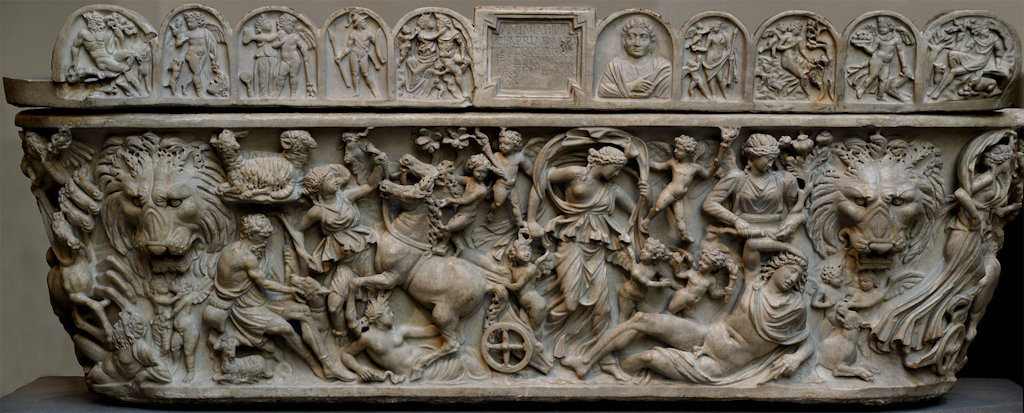
On the centre of the lid is an inscription in a frame:
|
ANINIA HILARA CL(audiae) ARRIAE MARI LNCONPARABILE FECIT VIXIT ANN(is) L MEN(sibus) X |
Aninia Hilara for Claudia Arria, her mother extraordinary, made this. She lived years 50, months 10. |
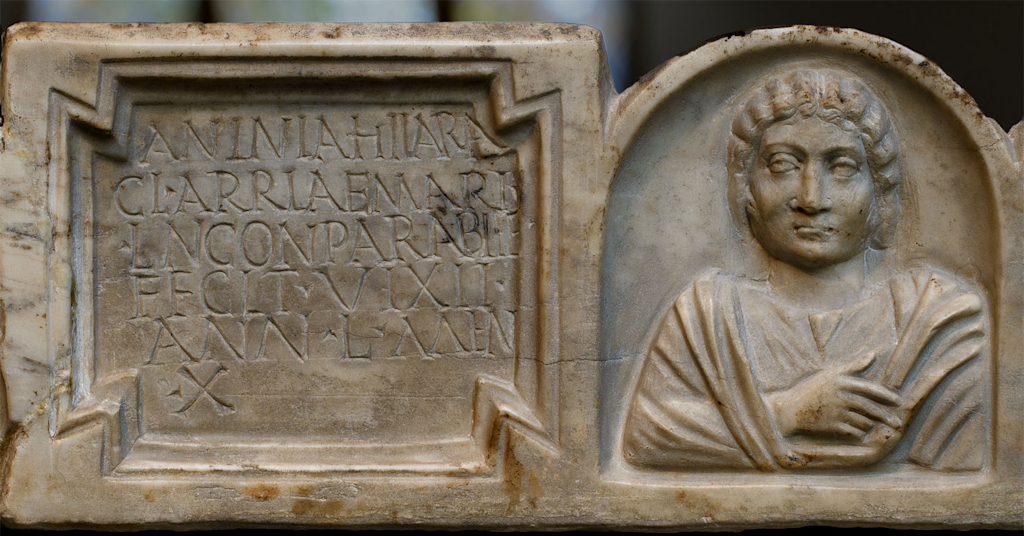
At first sight the inscription seems to go well with the sarcophagus, because it has a portrait of a woman only, not of a couple. However, the text contains major errors and was carved in a most sloppy way, which causes surprise on an expensive sarcophagus like this one. Does the inscription replace an earlier text that was hacked away? The deceased has her hair in the style made fashionable by Julia Domna, wife of Septimius Severus.
On the right part of the sarcophagus is the sleeping Endymion. Above him is the winged Hypnos, god of sleep. In his left hand is a poppy plant, in his right hand a horn from which he pours sleeping juice over Endymion. To the left Selene, with a moon crescent on her head, dismounts from her chariot. She is surrounded by Erotes, some holding burning torches, others watching over the chariot. To the right, below the lion head, are two Erotes and a dog.
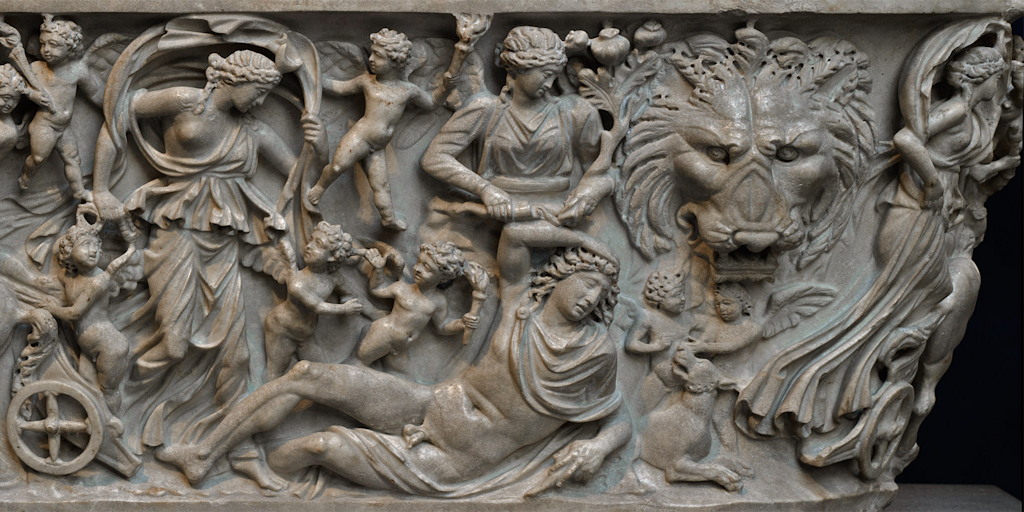
On the left part of the sarcophagus a winged female deity holds the reins of Selene's chariot. To her left is a seated herdsman with his dog and herd. To his left, below the lion head, Amor and Psyche embrace each other.
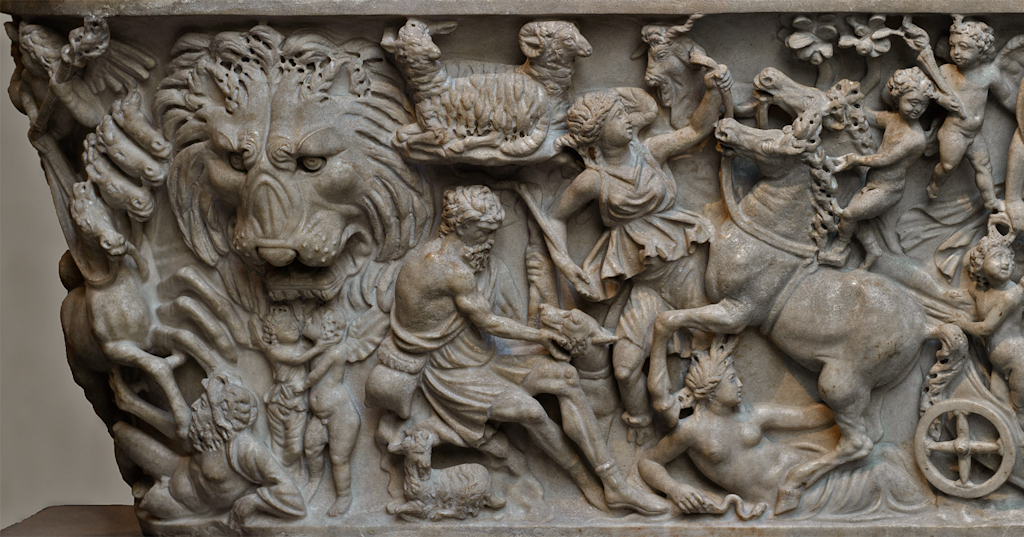
On the left side of the sarcophagus we see Sol, the sun god, in his chariot. He has rays on his head. He is preceded by a flying Eros holding a torch, the Morning Star. Under his horses lies the bearded Oceanus. On the right side we see Selene again, in her chariot. Below her horses lies the personification of Earth. In front of her an Eros with a torch falls downward. This is the setting Evening Star.
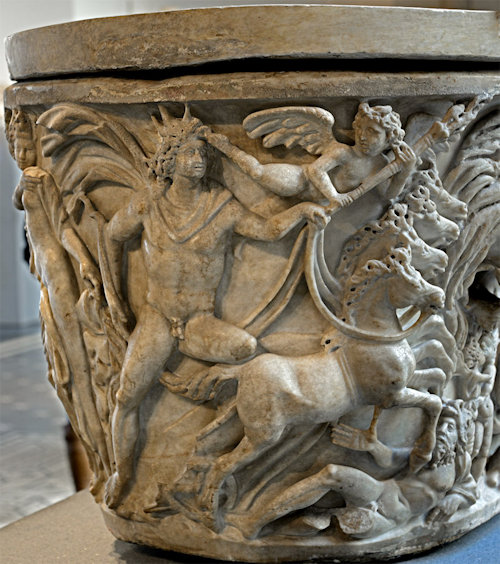 |
 |
On the back of the sarcophagus is a pastoral scene. We see two herdsmen with their cattle and horses. At the far right two nymphs watch the scene on the front. One is pointing, the other holds a jar from which water is flowing.
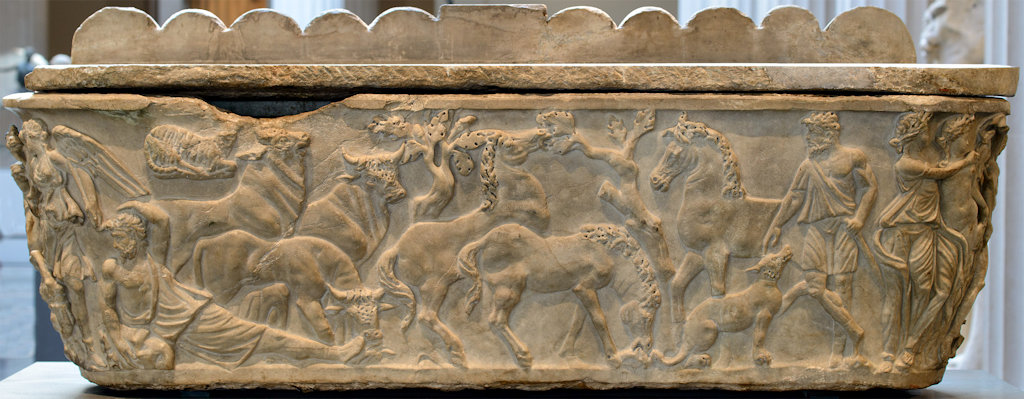
On the upper left part of the lid are figures in five frames: a mountain god, Autumn, Amor and Psyche, Mars, and the united couple Selene and Endymion.

On the upper right part of the lid are figures in four frames, next to the portrait of the deceased: a standing Venus, a seated Venus, Spring, and a mountain god.

Inv. nr. 47.100.4a, b. Paschetto 1912, nr. 287. CIL XIV, 565. EDR151132. SO IX, nr. 69. F. Matz, "An Endymion Sarcophagus Rediscovered", The Metropolitan Museum of Art Bulletin 15,5 (1957), 123-128. J. Sorabella, "A Roman Sarcophagus and Its Patron", Metropolitan Museum Journal 36 (2001), 67-81. Photos: Ilya Shurygin. Notice of the sale in a newspaper in 1913. MMA info.